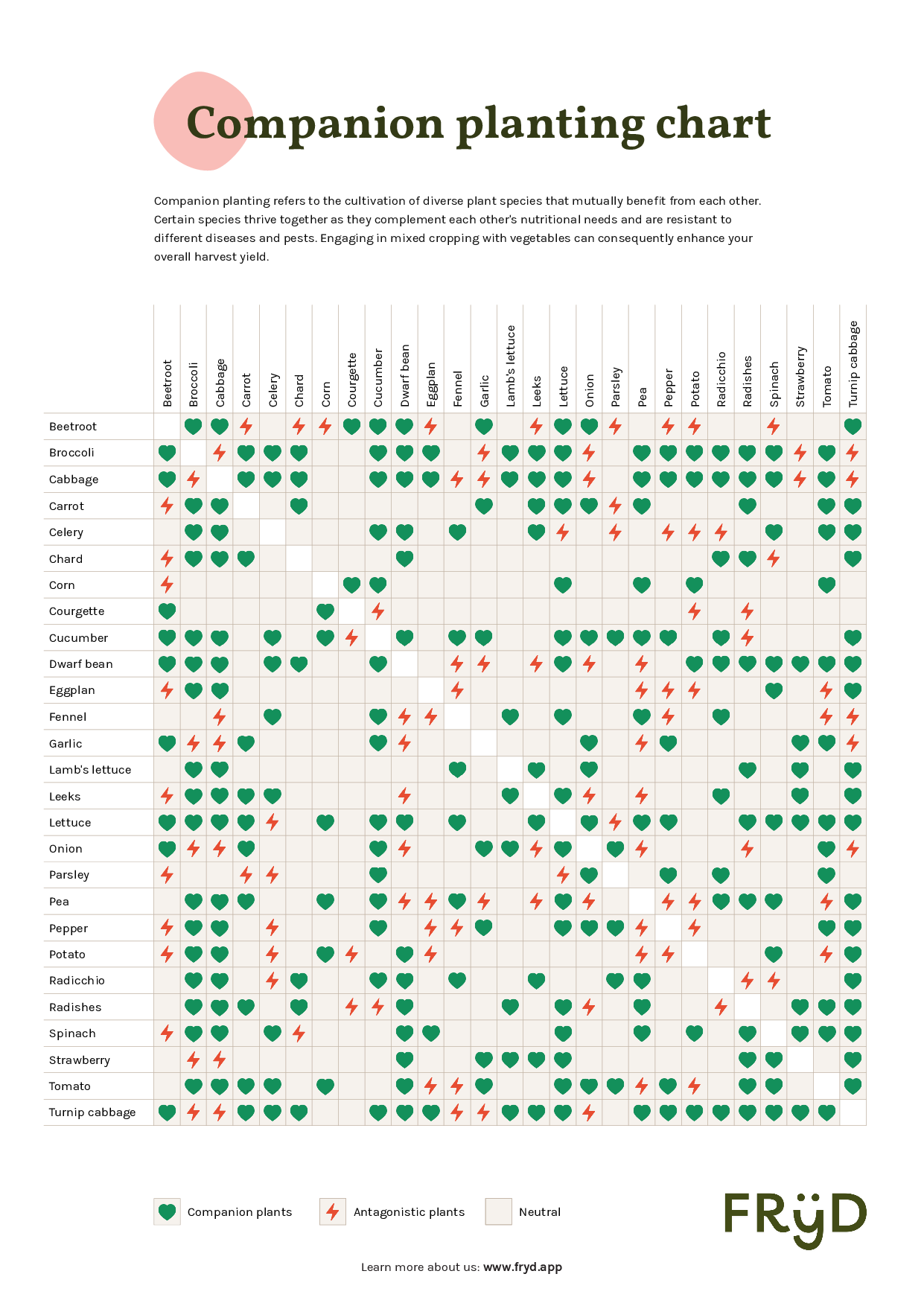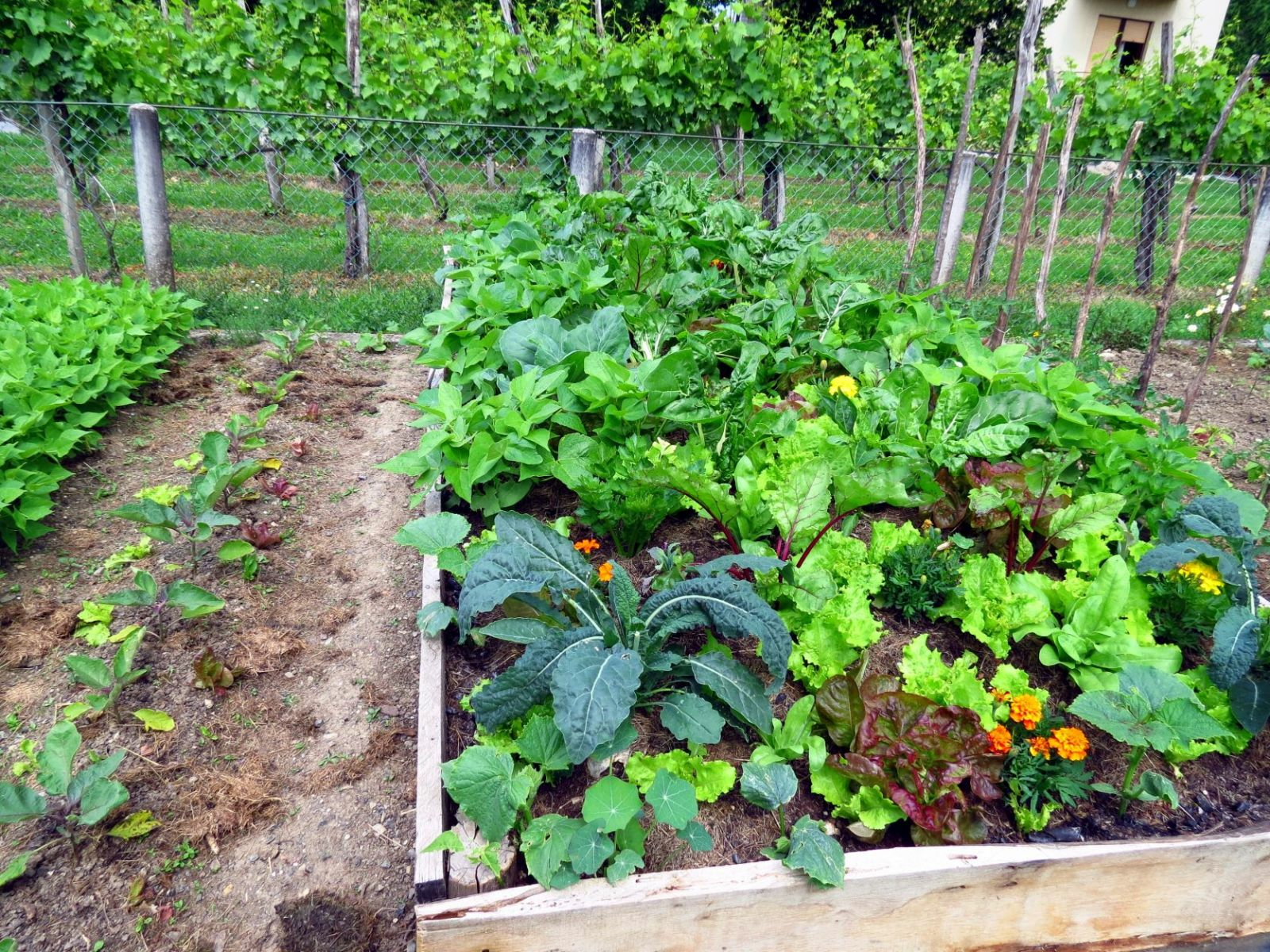
Companion Planting: Mixed Cultivation in the Vegetable Patch
Mixed cultivation refers to the cultivation of different plant species that have a positive influence on each other. This is the opposite of monoculture. Great harvests can be achieved through targeted planting, especially in the garden. You can find out how it all works in this article.
This Article Contains:
Quick Overview
What Is a Mixed Culture?
When growing in a mixed crop, plants are combined that have a positive effect on each other. This has many advantages and solves many of the problems associated with monoculture cultivation.
Advantages of Companion Planting at a Glance
- Protection against diseases & pests
- Optimal nutrient utilization
- Growth improvement through suitable companion plants
- improved space utilization (several levels)
- ecological balance - creation of habitats
What Is a Mixed Culture?
Like humans, plants have different characteristics. Some species get along particularly well with each other and can even have a positive influence each other. They grow better in the presence of certain plants or protect themselves against diseases and pests. Other species, however, form unfavorable partnerships and tend to weaken each other. The result is stunted growth or disease. Mixed cultivation ensures that suitable companion plants are combined with each other to form strong and resilient communities.
Advantages of Mixed Cropping
In addition to possible positive effects on the individual plants in the bed, the entire ecosystem in the garden benefits from mixed cultivation especially when considering companion plants. A diverse selection of plants in your bed promotes diversity in your garden. This provides food and habitat for many useful animals and insects. In a monoculture, on the other hand, the selection is very one-sided and only a few creatures benefit. Diversity in the garden is not only good for the environment and species conservation, but also for gardeners. This creates an ecological balance in your garden consisting of many players that regulate each other. This means that pests and diseases cannot spread so easily and cause major damage. Planning in mixed cultures is therefore part of preventative plant protection and follows the principles of ecological gardening. More tips on Environmentally Conscious and Organic Gardening can be found in the article on this topic.

How Do I Plan Companion Planting for My Vegetable Patch?
We have put together some criteria here to make it easier for you to create a cultivation plan for mixed cultivation in your garden. If you follow these points, you can make optimum use of your garden resources. The plants will not steal space, nutrients or light from each other and the available space will be fully utilized.
Growth Shapes
An important criterion when planning a mixed crop is to consider the different growth forms. If this is taken into account, the available space in the vegetable patch can be used much more efficiently. For example, a corn plant can serve as a climbing aid for a bean. Ground-covering underplanting, such as pumpkin, ensures that the soil is always protected by a plant cover. This suppresses unwanted weeds and protects the soil from erosion.
Root Zone
Root space is also taken into account. There are shallow-rooted plants that only keep their roots in the uppermost soil layers. Only in this area do they have access to the surrounding nutrients. If only shallow-rooted plants are grown on an area, nutrients are leached from deeper soil layers. To avoid this loss, shallow-rooted plants are combined with deep-rooted plants. This root group reaches soil depths of up to over 1 m. As the roots of the plants grow in different areas of the soil, there is no competition for nutrients. So don't forget to include the roots of the plants in your cultivation plan!
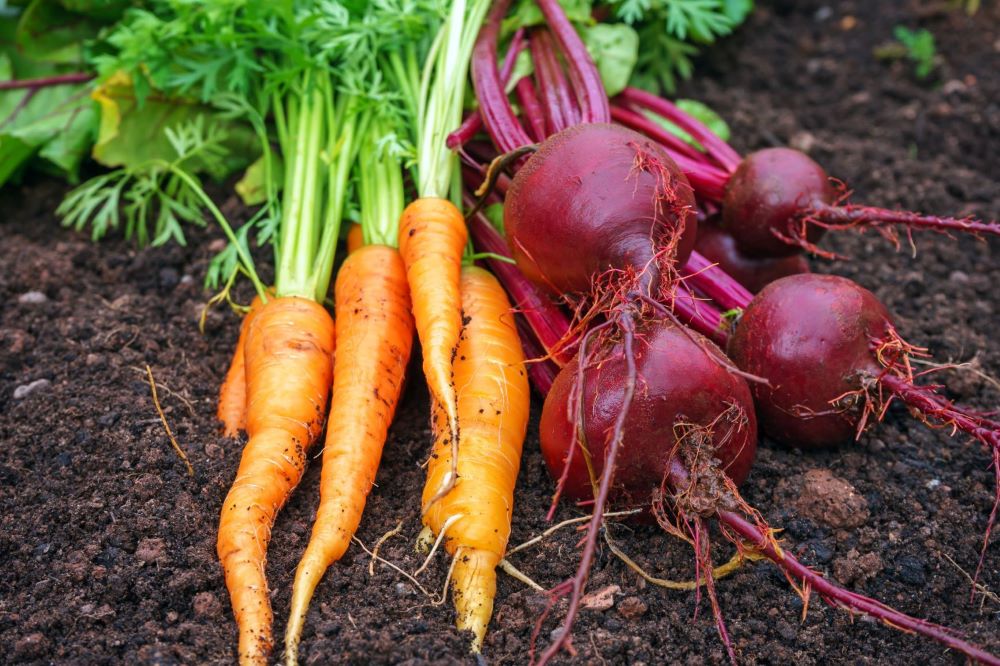
- Shallow-rooted: pea, lamb's lettuce, cucumber, potato, kohlrabi, lettuce, corn, radish, shallot, spinach, onion, pumpkin
- Deep-rooted: bean, chard, carrot, bell pepper, parsnip, beetroot, tomato, white cabbage, savoy cabbage
Plant Families
Plants from the same family often need the same nutrients and steal them from each other as they grow. They also attract the same pests. The rule of thumb is therefore to avoid having plants from the same genus next to each other. We have listed the best-known plant families here:
- Umbellifers: carrot, fennel, celery stalks, celery
- Cruciferous plants: cabbage, horseradish, cauliflower, savoy cabbage, mustard, radish, daikon
- Legumes: peas, beans
- Solanaceae: potatoes, tomatoes, peppers, eggplants
- Allium: onions, garlic, leeks
- Asteraceae: lettuce, iceberg lettuce, lettuce, celery
- Foxtail family: beetroot, spinach
- Valerianaceae: lamb's lettuce

Want to Plan a Mixed Crop?
With our vegetable planner you can easily plan a colorful mixed crop. Good and bad neighbors are shown right away, and you get crop rotation tips!
Plan Your Vegetable Garden Now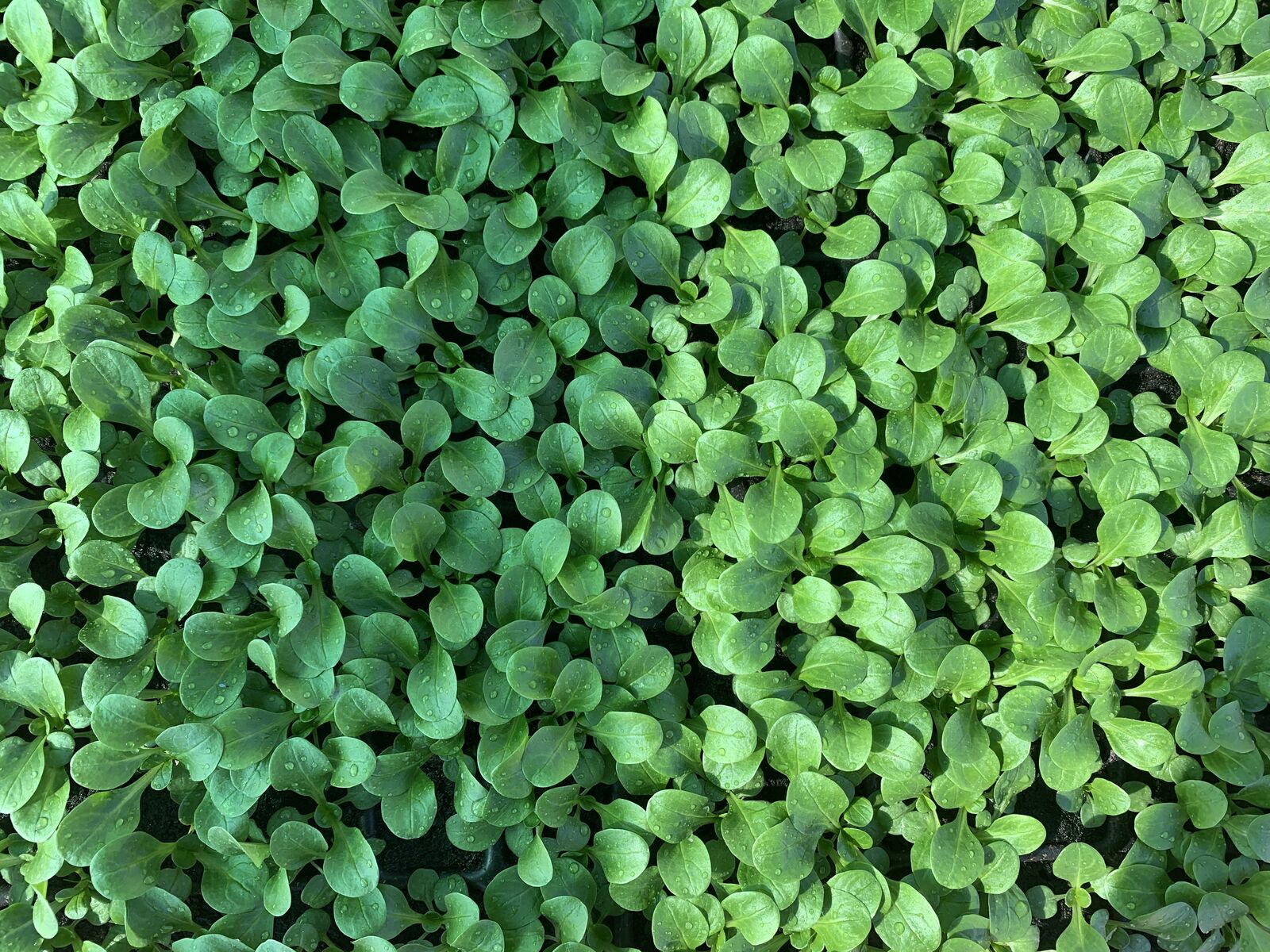
Nutrient Requirements: Heavy and Light Feeder Crops
Some types of vegetables need a lot of nutrients, others are satisfied with just a few. By combining plants with similar nutrient requirements, many of the nutrients are removed from the soil and a deficiency can occur. To prevent this from happening, mixed cultivation ensures that plants with different nutrient requirements are distributed and alternated in the bed. The vegetable species are divided into three different categories: heavy, medium and light feeders. There should not be any heavy feeders next to each other, but rather plants with low nutrient requirements. You can find an overview of the nutrient requirements of the most important vegetable crops in our article on Heavy and Light Feeders.
Mixed Culture Table for Companion Plants: Which Plants Go Together?
As you have probably already noticed, there are a few things to consider when planning a mixed vegetable bed for your garden. As a beginner, it's easy to lose track. But don't worry, we've created a mixed crop table that gives you a good overview of good or bad companions for the most important crops.
Herbs as Companion Plants in a Mixed Crop
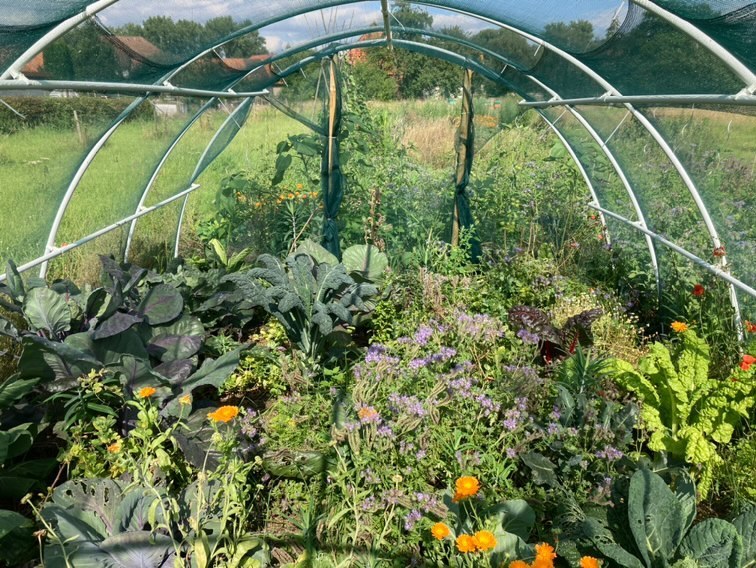
Mixed Vegetable and Herb Crops
Not only vegetable plants are suitable for mixed cultivation. Herbs are also valuable plant companions that can have a variety of effects. Combined with vegetables, they can repel so-called pests with their strong scent and attract beneficial insects at the same time. Some herbs also have a positive effect on the growth and taste of vegetables. You can find out more about Mixed Herb and Vegetable Crops in our article on the subject.
Mixed Herb Cultures
But you should also pay attention to the principles of mixed cultivation when planting a new herb garden. You can find out why you should plant a Mixed Herb Garden and Which Herbs Go Well Together in our article!
Examples of Your Mixed Crop Planting Plan
For inspiration, we have created 5 Examples for Your Mixed Cultivation.. In this article you will find five digital bed plans created with the Fryd app:
- For spring, you'll find Annabell' s Field Bean Bed here, in which she combines field beans, carrots, nasturtium and savory.
- In summer, you can take inspiration from Tini's Tomato Patch. She has planted a particularly diverse mixed crop with tomatoes, beans, celeriac and savory.
- Another mixed crop that is perfect for the summer is Milpa. Milpa is a traditional mixed crop that was already cultivated by the Aztecs. You can find an example of a cultivation plan in the article Marie's Milpa Bed.
- For the fall, Marlene has shared her Mixed Chard Xrop with us: here she combines chard, cabbage, leeks, lettuce, spinach and radishes.
- It is also possible to grow vegetables in winter. Be inspired by Patrick’s Patch With Heirloom Vegetables Varieties in a Mixed Culture. He grows kale, palm kale, Brussels sprouts, spinach, barbara cabbage, lamb's lettuce, spring onions and parsnips together. This means you can also enjoy home-grown vegetables in winter and also promote biodiversity by growing old varieties!
The possibilities for planting mixed crops are enormous. Get creative and plan your own beds! Not only is it fun, but it also adds value to nature and the ecosystem in the garden.
If you have any questions or comments, please write to us at magazin@fryd.app.
Want to get helpful gardening tips all year round and plan your own beds in the best possible way? Then register here or download the Fryd app for Android or iOS.
Fryd - Your digital bed planner
Cover picture by silviarita on pixabay.
Isabell
Current Topics in the Community
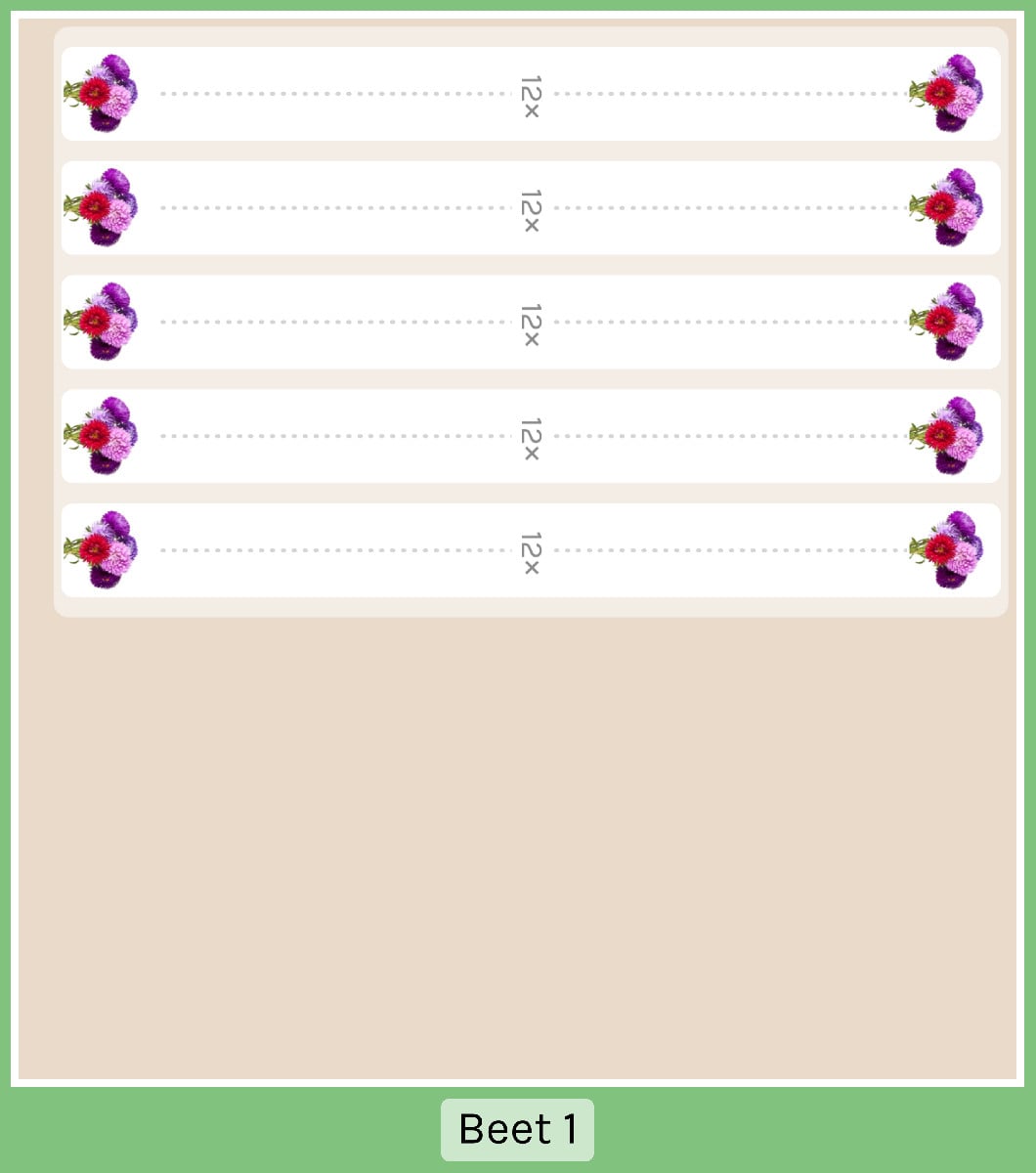


Liked 1 times
@Ufrydpaid_01
Popular Articles

Companion Plants for Carrots: What (Not) to Plant With Carrots

Companion Plants for Celery : What (Not) to Plant With Celery?

Strawberry Types: List of Best Strawberry Varieties

Companion Planting With Strawberries: Companion Plants and Planting Plan

Basil Varieties & Types at a Glance

What to Plant With Cabbage: Good and Bad Companion Plants

Fertilizing Strawberries: Home Remedies & Natural Fertilizers at a Glance

Growing Sweet Potatoes: Tips on Cultivation & Companion Plants

Companion Plants for Kitchen Herbs: Chives, Parsley & Co

What Herbs Can Be Planted Together?
FAQ
Mixed cultivation refers to the cultivation of different plant species that have a positive effect on each other in the same bed.
What are the advantages of mixed cultivation?
It offers protection against diseases and pests, optimises the use of nutrients, improves plant growth and promotes an ecological balance.
Consider growth forms, root spaces, plant families and the nutrient requirements of the plants.
Which plants go well together?
A detailed mixed crop table shows compatible plant neighbors (PDF in the article). For example, tomatoes go well with basil and cabbage with dill.

